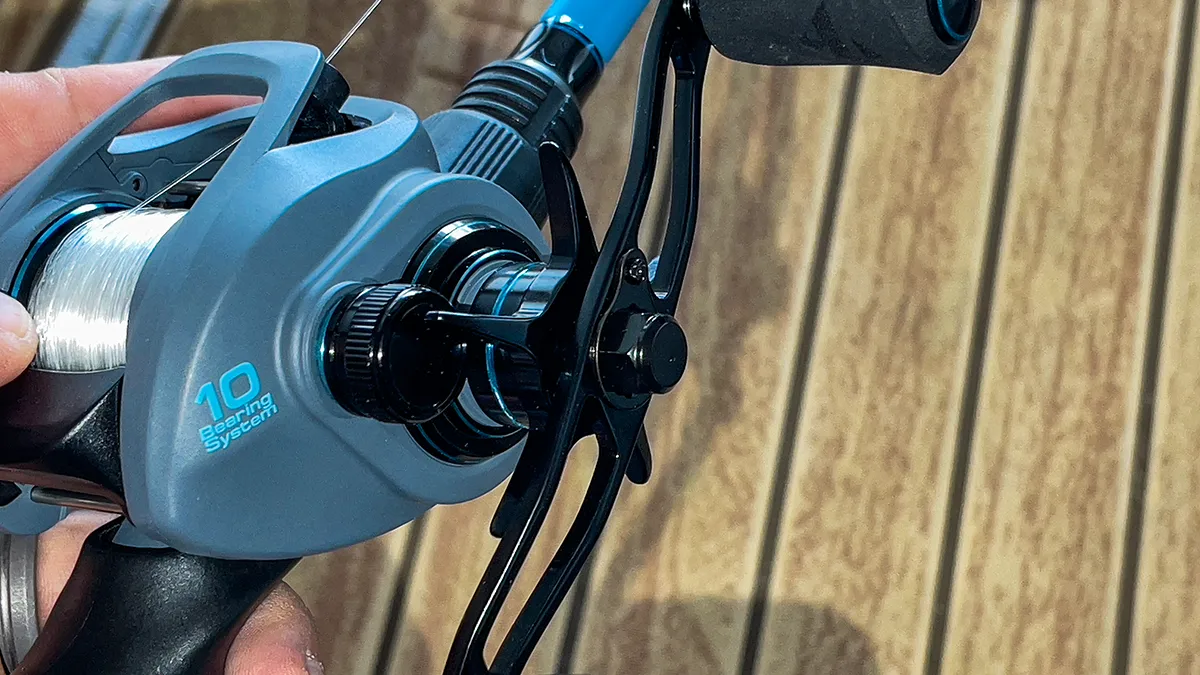Baitcasters offer incredible casting control and power for hauling in hefty fish. But unlike spinning reels, where the drag is a simple set-and-forget affair, baitcasters require a bit more finesse. Mastering your baitcaster’s drag is crucial to avoiding heartbreak – lost fish due to line snaps or break-offs. Here’s a breakdown on how to properly set your baitcaster drag:
Understanding the Drag Knob:
Most baitcasters feature a star-shaped knob at the reel’s base. Turning it clockwise tightens the drag, applying more resistance when a fish pulls line. Conversely, turning it counter-clockwise loosens the drag, allowing line to release under pressure.
Balancing Power and Protection:
The ideal drag setting strikes a perfect balance between two key factors:
- Solid Hooksets: Enough drag is needed to ensure a firm hook penetration during the initial strike. A loose drag can lead to missed opportunities if the fish pulls free before the hook sets properly.
- Line Protection: Excessive drag can cause your line to snap under extreme pressure, especially when using lighter lines. The drag should act as a safety valve, releasing line before the line itself reaches its breaking point.

Finding the Sweet Spot:
Here are some techniques to help you find the optimal drag setting for your specific setup:
-
Line Weight Consideration: Heavier lines (like 20lb test for bass fishing) can handle a tighter drag for pulling fish from cover. Lighter lines (for finesse presentations) require a looser drag to prevent break-offs.
-
The Rod’s Role: Your rod’s action (flexibility) also plays a part. Stiffer rods can handle a tighter drag as they absorb more pressure before reaching their bend limit. Conversely, lighter, more flexible rods need a looser drag to avoid overloading the blank.
-
The Bend Test: Here’s a practical method:
- Thread your line through all the guides and let out a few feet.
- Hold the rod like you normally would while fishing.
- Slowly pull the line with steady pressure, simulating a fish pulling.
- Observe the rod’s bend. The drag should begin to release line when the rod reaches a good bend (around half its maximum flex). This allows the rod’s natural flex to absorb some of the fight before the drag kicks in as an additional safeguard.
Adapting Throughout the Fight:
Remember, the drag setting is just a starting point. As the fight progresses, be prepared to adjust the drag on the fly using your thumb:
- Initial Run: During a powerful initial run, you might loosen the drag slightly with your thumb to prevent a line break.
- Gaining Control: As you tire the fish and gain control, you can gradually tighten the drag to bring it closer.
Practice Makes Perfect:
The best way to master your baitcaster drag is through practice. Experiment with different settings while fighting imaginary fish or practice setting the drag with a friend applying pressure to the line. With some practice, you’ll develop the feel for the perfect drag setting, giving you the confidence to land the trophy fish of your dreams!
Image/Source: Wired2Fish





